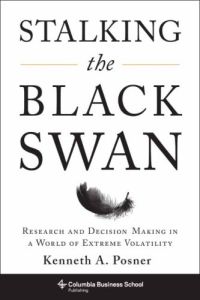
Stalking the Black Swan
Research and Decision Making in a World of Extreme Volatility
Recommendation
While many books talk about forecasting and decision making, this one is particularly engaging because of Kenneth A. Posner’s personal experience – and the honesty with which he discusses it. As a longtime analyst at Morgan Stanley, Posner had to make decisions about whether to invest in many recent high-profile, high-stakes “Black Swan” anomalies. He explains general models and approaches to dealing with uncertainty, sorting information, and developing your analytical skills and judgment. That alone is worthwhile, but the book is especially lively when Posner reviews his specific decisions. He shares his reasoning and exposes his successes and his failures to public view. The result is a knowledge-dense but very readable work that getAbstract recommends to all analysts, but also to those who want to deal with information overload and improve their decision making.
Summary
About the Author
Kenneth A. Posner worked as a Morgan Stanley managing director and senior research analyst.









Comment on this summary